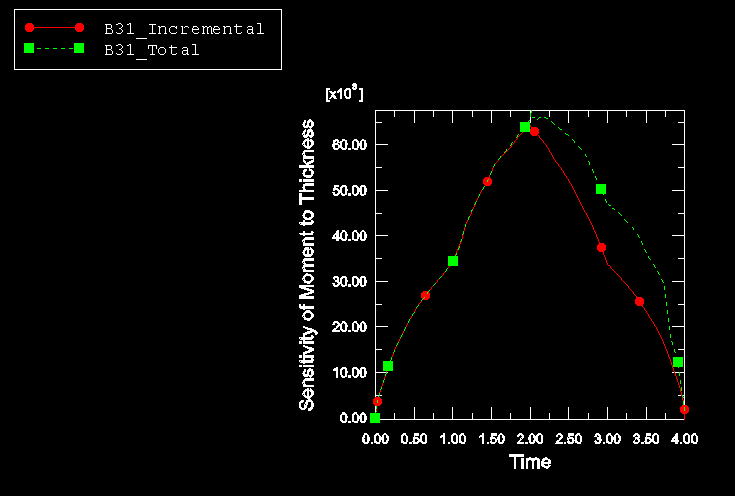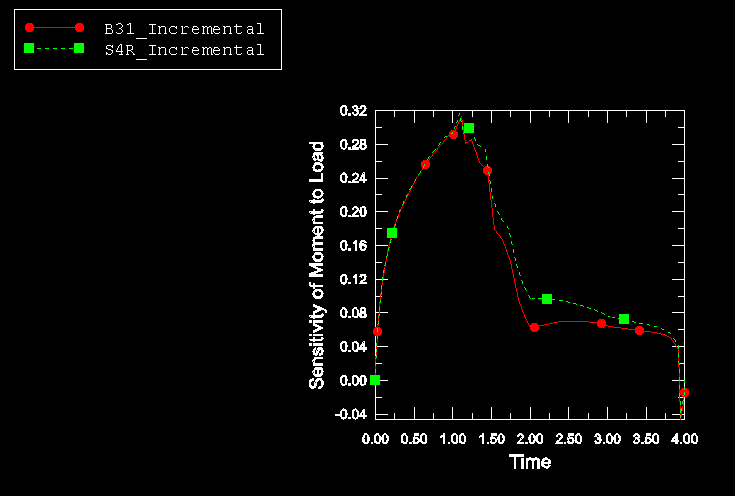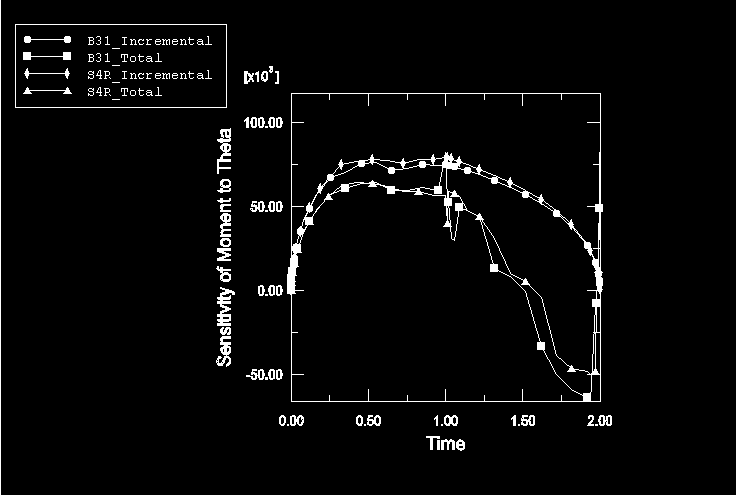Problem description
The geometry of the problem is the same as that of the NAFEMS benchmark problem 3DNLG-1: Elastic large deflection response of a Z-shaped cantilever under an end load. The problem is modified by adding plasticity to the material definition and by changing the direction of the application of the tip load to act along the axis of the beam as shown in Figure 1 so as to cause extensive plastic yielding. All the problems use 72 elements to model the beam.
Initial yield occurs when the stress reaches 4000. The strain hardening increases the yield stress to 8000 at the plastic strain of 0.05 and to 9000 at the plastic strain of 0.10.
A total load of 50000 is applied in the global x- and y-directions such that the resultant load of 70710.6 acts along the axis of the beam. Of this, 25% is applied in the first step and the remainder is applied in the second step. In Step 3 75% of the load is removed, and the complete load removal is finished by the end of Step 4. The step time for each of the steps is unity.
The thickness of the beam, T; the applied load, P; and the angle, , of the inclined member of the Z-cantilever are chosen as the design parameters. The sensitivity is studied in detail for the same two output variables used in the original NAFEMS problem: the tip deflection of the cantilever, U, and the section moment, M, at point A, as shown in Figure 1.







